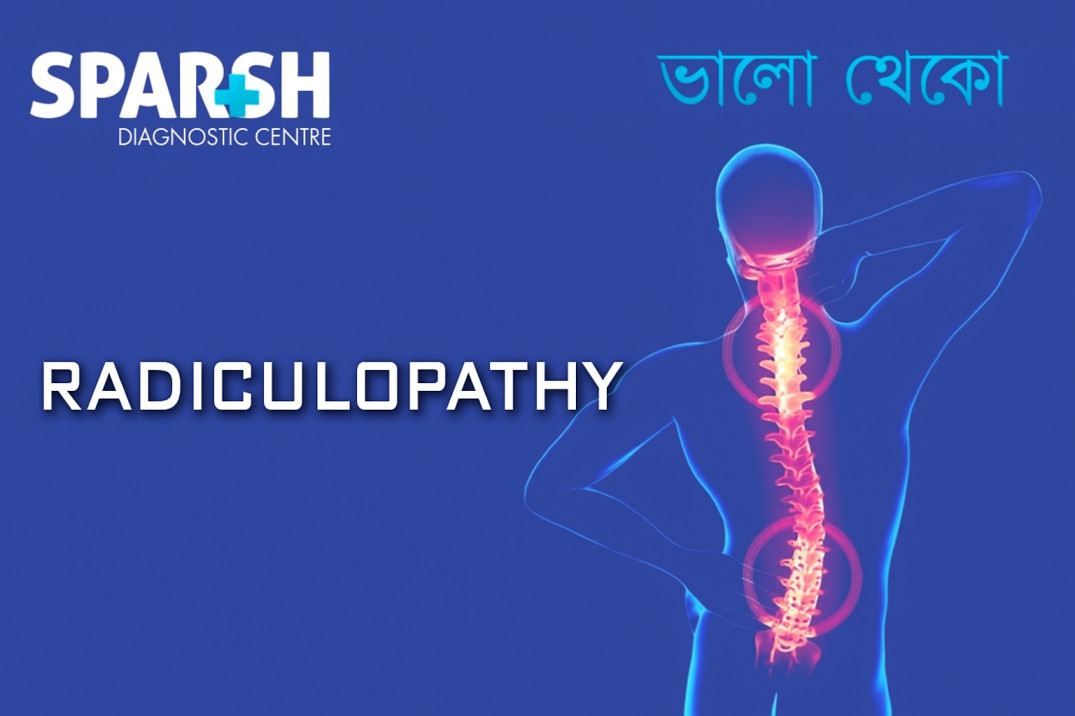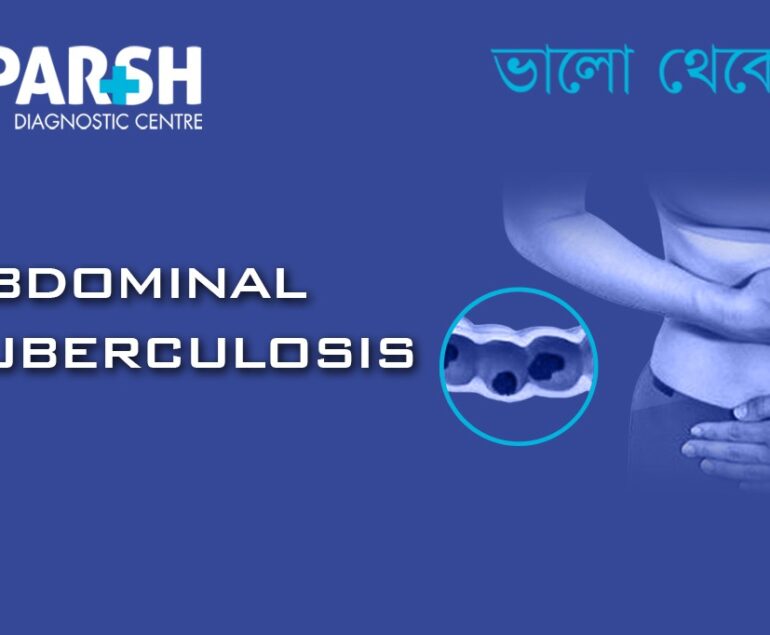Radiculopathy, often referred to as a “pinched nerve,” is a condition where one or more nerves are compressed or irritated as they exit the spinal column. This compression leads to pain, numbness, tingling, or weakness that radiates along the nerve’s path, often into the arms or legs.
Although radiculopathy can occur anywhere along the spine, it is most common in the neck (cervical radiculopathy) and lower back (lumbar radiculopathy). The condition can significantly impact mobility and quality of life if left untreated.
This blog explores radiculopathy in detail — its causes, types, symptoms, diagnosis, and treatment — and explains how advanced diagnostic tools can help in early detection and effective management.
Understanding Radiculopathy
The spinal cord is protected by the vertebral column and gives rise to spinal nerves that exit through small openings (foramina) between the vertebrae. When these nerves become compressed due to structural or pathological changes, radiculopathy occurs.
Common Types of Radiculopathy
Affects nerves in the neck region (C1–C7).
Symptoms often radiate to the shoulders, arms, and hands.
Thoracic Radiculopathy
Involves nerves in the mid-back (T1–T12).
Less common but may cause pain around the chest or abdomen.
Lumbar Radiculopathy
Affects nerves in the lower back (L1–L5).
Commonly causes pain radiating into the hips, buttocks, or legs — often known as sciatica.
Causes of Radiculopathy
Radiculopathy can result from several spinal or nerve-related issues, including:
1. Herniated or Bulging Disc
One of the most common causes. The soft, gel-like material inside a spinal disc pushes out through a tear, compressing nearby nerves.
2. Degenerative Disc Disease
With age, spinal discs lose flexibility and height, leading to narrowing of nerve passageways and increased pressure on nerve roots.
3. Spinal Stenosis
Narrowing of the spinal canal or foramina that compresses nerve roots, often due to bone spurs or arthritis.
4. Bone Spurs (Osteophytes)
Overgrowth of bone tissue around vertebrae can pinch nerve roots and cause chronic irritation.
5. Trauma or Injury
Spinal injuries from falls, car accidents, or sports can lead to inflammation and nerve root compression.
6. Tumors or Infections
Rarely, growths or infections in or around the spine can press on nerve roots and cause radiculopathy.
Risk Factors
Certain factors can increase your risk of developing radiculopathy:
Age: Degenerative spinal changes increase with age.
Repetitive motion or poor posture: Especially in physically demanding jobs.
Obesity: Adds pressure to the spinal column.
Smoking: Accelerates disc degeneration.
Genetic predisposition: Some people inherit weaker connective tissues.
Symptoms of Radiculopathy
Symptoms vary depending on the location and severity of nerve compression, but common signs include:
1. Pain
Sharp, shooting, or burning pain radiating from the spine to the arms or legs.
Cervical radiculopathy: Pain may spread to the shoulders and hands.
Lumbar radiculopathy: Pain may radiate down the leg (sciatica).
2. Numbness or Tingling
Sensations of pins and needles along the affected nerve path.
3. Muscle Weakness
Difficulty lifting, gripping, or walking due to nerve impairment.
4. Reduced Reflexes
Reflex response in the arms or legs may be slower than usual.
5. Neck or Back Stiffness
Localized stiffness or reduced range of motion.
If symptoms worsen or persist for more than a few weeks, medical evaluation is essential to prevent long-term nerve damage.
Diagnosis of Radiculopathy
Diagnosing radiculopathy involves a combination of clinical evaluation and advanced imaging.
1. Medical History and Physical Examination
The doctor reviews symptoms, lifestyle, and medical history.
Physical tests assess muscle strength, reflexes, and range of motion.
2. Imaging Tests
X-rays: Reveal bone abnormalities or misalignment.
MRI (Magnetic Resonance Imaging): Provides detailed images of soft tissues, discs, and nerves to identify compression.
CT Scan with Myelogram: Highlights nerve root involvement using contrast dye.
3. Electrophysiological Tests
Electromyography (EMG): Measures muscle response to nerve stimulation.
Nerve Conduction Study (NCS): Detects abnormalities in electrical activity of nerves.
These tests help pinpoint the exact location and severity of nerve compression.
Treatment Options for Radiculopathy
Treatment depends on the underlying cause and symptom severity. Most cases improve with conservative (non-surgical) management.
1. Conservative (Non-Surgical) Treatments
a. Rest and Activity Modification
Avoid activities that worsen pain (e.g., heavy lifting or prolonged sitting).
b. Medications
Pain relievers: NSAIDs (ibuprofen, naproxen).
Muscle relaxants: To reduce spasms.
Neuropathic pain medications: Such as gabapentin or pregabalin.
Corticosteroids: Oral or injected to reduce inflammation.
c. Physical Therapy
Exercises to strengthen back muscles, improve posture, and reduce nerve pressure.
Stretching routines help improve spinal flexibility.
d. Hot and Cold Therapy
Alternating heat and ice packs can ease inflammation and pain.
e. Lifestyle Modifications
Maintain healthy body weight.
Practice ergonomic posture during work.
Quit smoking to prevent disc degeneration.
2. Interventional Treatments
If pain persists despite conservative therapy, the following options may be considered:
Epidural Steroid Injections: Reduce inflammation around the nerve root.
Nerve Blocks: Temporary pain relief using local anesthetics.
3. Surgical Treatment
Surgery is recommended only when conservative methods fail or when there is significant nerve compression causing weakness or loss of function. Common surgical options include:
Discectomy: Removal of herniated disc material pressing on a nerve.
Laminectomy: Removal of part of the vertebra to relieve spinal canal pressure.
Foraminotomy: Enlargement of the nerve passageway.
Spinal Fusion: Joining two or more vertebrae to stabilize the spine.
Post-surgery rehabilitation plays a vital role in restoring mobility and function.
Complications of Untreated Radiculopathy
Ignoring radiculopathy or delaying treatment can lead to:
Permanent nerve damage
Chronic pain and muscle weakness
Loss of bladder or bowel control (in severe lumbar cases)
Reduced quality of life and physical ability
Early diagnosis and intervention significantly improve outcomes.
Preventing Radiculopathy
Although not all cases can be prevented, you can reduce your risk with these steps:
Maintain good posture during sitting, standing, and lifting.
Engage in regular exercise, especially core-strengthening workouts.
Maintain a healthy weight to minimize spinal stress.
Use ergonomic furniture at work.
Avoid smoking and heavy alcohol use.
Radiculopathy and Nerve Tests at Sparsh Diagnostic Centre
At Sparsh Diagnostic Centre, we offer advanced diagnostic tools for accurate identification of radiculopathy causes, including:
MRI and CT Scans for spine imaging.
Nerve Conduction Studies (NCS) to evaluate nerve health.
Electromyography (EMG) to assess muscle and nerve interaction.
Our team of experienced radiologists and technicians ensures precision diagnosis and timely reports, helping your doctor create an effective treatment plan.
When to See a Doctor
Seek immediate medical attention if you experience:
Severe, shooting pain down your arm or leg
Numbness or tingling that doesn’t subside
Muscle weakness or loss of coordination
Difficulty controlling bowel or bladder movements
Prompt evaluation can prevent complications and ensure a faster recovery.
Prognosis
Most patients with radiculopathy recover fully with appropriate rest, medication, and physical therapy. However, recurrence is possible if spinal health and posture are not maintained. Chronic cases may require ongoing management.
Radiculopathy is a common yet often misunderstood spinal nerve disorder that can cause significant discomfort and mobility challenges. Understanding its symptoms, causes, and treatment options is key to effective management.
With the right combination of diagnostic tools and medical care — such as those available at Sparsh Diagnostic Centre, Kolkata — patients can achieve relief, restore function, and prevent recurrence.
Frequently Asked Questions (FAQs)
1. What is the main cause of radiculopathy?
The most common cause is a herniated or bulging disc pressing on a spinal nerve. Other causes include spinal stenosis, bone spurs, and degenerative disc disease.
2. How is radiculopathy diagnosed?
It’s diagnosed using a combination of clinical examination, MRI, CT scans, and nerve conduction tests like EMG and NCS.
3. Can radiculopathy heal on its own?
Mild cases can improve within weeks through rest, medications, and physical therapy. However, persistent or severe cases may require injections or surgery.
4. Is radiculopathy the same as sciatica?
Sciatica is a type of lumbar radiculopathy, where the sciatic nerve is compressed, causing pain that radiates down the leg.
5. What exercises help radiculopathy?
Stretching, low-impact aerobic activity, and core-strengthening exercises are beneficial. Always consult a physical therapist before starting.
6. When should surgery be considered?
Surgery is advised when symptoms last longer than 6–12 weeks, or when there is significant weakness or nerve damage.
7. Can imaging tests detect all types of radiculopathy?
MRI is the gold standard for detecting soft tissue and nerve compression. Electrophysiological tests help confirm functional nerve involvement.
8. How can Sparsh Diagnostic Centre help?
Sparsh Diagnostic Centre offers advanced MRI, CT, EMG, and NCS facilities to diagnose radiculopathy accurately, ensuring the right treatment plan for recovery.
#BhaloTheko
Disclaimer:
No content on this site, regardless of date, should ever be used as a substitute for direct medical advice from your doctor or other qualified clinician.

![]()






[…] Radiculopathy […]